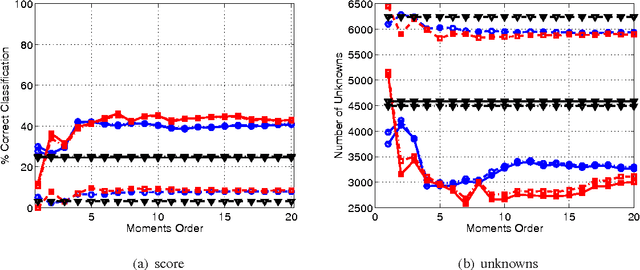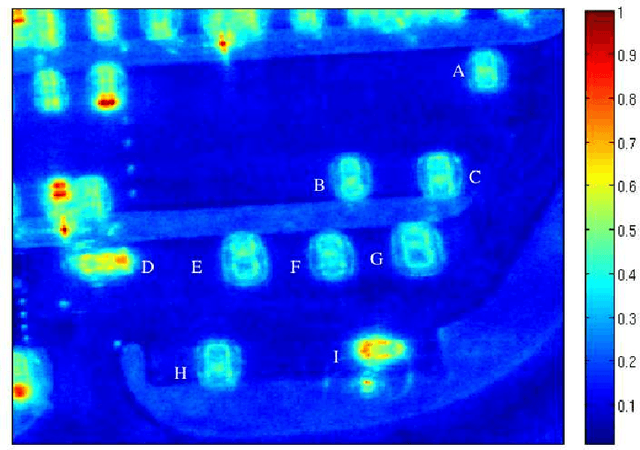Luca Pallotta
Covariance Symmetries Classification in Multitemporal/Multipass PolSAR Images
May 16, 2025Abstract:A polarimetric synthetic aperture radar (PolSAR) system, which uses multiple images acquired with different polarizations in both transmission and reception, has the potential to improve the description and interpretation of the observed scene. This is typically achieved by exploiting the polarimetric covariance or coherence matrix associated with each pixel, which is processed to meet a specific goal in Earth observation. This paper presents a design framework for selecting the structure of the polarimetric covariance matrix that accurately reflects the symmetry associated with the analyzed pixels. The proposed methodology leverages both polarimetric and temporal information from multipass PolSAR images to enhance the retrieval of information from the acquired data. To accomplish this, it is assumed that the covariance matrix (of the overall acquired data) is given as the Kronecker product of the temporal and polarimetric covariances. An alternating maximization algorithm, known as the flip-flop method, is then developed to estimate both matrices while enforcing the symmetry constraint on the polarimetric covariance. Subsequently, the symmetry structure classification is formulated as a multiple hypothesis testing problem, which is solved using model order selection techniques. The proposed approach is quantitatively assessed on simulated data, showing its advantages over its competitor, which does not exploit temporal correlations. For example, it reaches accuracies of 94.6% and 92.0% for the reflection and azimuth symmetry classes, respectively, while the competitor achieves 72.5% and 72.6% under the same simulation conditions. Finally, the effectiveness of the proposed framework is further demonstrated using measured RADARSAT-2 data, corroborating the results obtained from the simulations.
Power-Aperture Resource Allocation for a MPAR with Communications Capabilities
Jul 06, 2023Abstract:Multifunction phased array radars (MPARs) exploit the intrinsic flexibility of their active electronically steered array (ESA) to perform, at the same time, a multitude of operations, such as search, tracking, fire control, classification, and communications. This paper aims at addressing the MPAR resource allocation so as to satisfy the quality of service (QoS) demanded by both line of sight (LOS) and non line of sight (NLOS) search operations along with communications tasks. To this end, the ranges at which the cumulative detection probability and the channel capacity per bandwidth reach a desired value are introduced as task quality metrics for the search and communication functions, respectively. Then, to quantify the satisfaction level of each task, for each of them a bespoke utility function is defined to map the associated quality metric into the corresponding perceived utility. Hence, assigning different priority weights to each task, the resource allocation problem, in terms of radar power aperture (PAP) specification, is formulated as a constrained optimization problem whose solution optimizes the global radar QoS. Several simulations are conducted in scenarios of practical interest to prove the effectiveness of the approach.
Pseudo-Zernike Based Multi-Pass Automatic Target Recognition From Multi-Channel SAR
Aug 06, 2014



Abstract:The capability to exploit multiple sources of information is of fundamental importance in a battlefield scenario. Information obtained from different sources, and separated in space and time, provide the opportunity to exploit diversities in order to mitigate uncertainty. For the specific challenge of Automatic Target Recognition (ATR) from radar platforms, both channel (e.g. polarization) and spatial diversity can provide useful information for such a specific and critical task. In this paper the use of pseudo-Zernike moments applied to multi-channel multi-pass data is presented exploiting diversities and invariant properties leading to high confidence ATR, small computational complexity and data transfer requirements. The effectiveness of the proposed approach, in different configurations and data source availability is demonstrated using real data.
 Add to Chrome
Add to Chrome Add to Firefox
Add to Firefox Add to Edge
Add to Edge